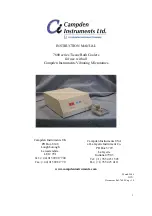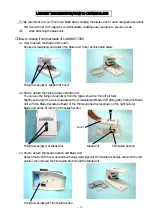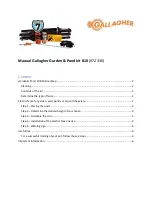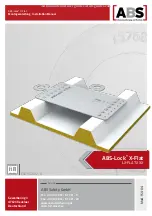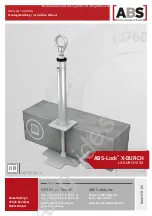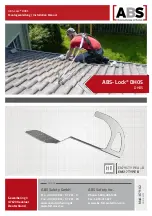
VII. Procedure
(1) For adherent cells cultured in a 96-well plate
1. Remove the culture supernatant with an aspirator, etc.
2. Add 200 μ l of physiological saline to each well, wash once, then discard the liquid.
Note 1) If the cells are detached, this process should be omitted, and a blank well
containing medium only should be set to correct the observed data.
Note 2) Phosphate buffers should not be used in washing because they might in-
hibit the enzyme reaction.
3. Pipetting lightly, add 5 - 50 μ l of Extraction solution [2] to each well.
Note 1) The amount of Extraction solution added can be changed depending on
the number of cells. Approximately, 50 μ l should be used in the case of
10
4
cells.
Note 2) Sample should be diluted with Extraction solution when the sample con-
centration is high. (If extraction solution is insufficient, physiological saline
can be substituted.)
Part of the diluted sample (5 - 50 μ l) should be used in subsequent reactions.
Note 3) Lysis of the cells should be confirmed by microscopic observation.
4. Add 50 μ l of the substrate solution for measurement (see III. Preparation of Re-
agents) to each well and react at 37 ℃ for 15 - 60 minutes.
Note 1) Reaction time can be set arbitrarily.
Note 2) The volume ratio of the cell lysis sample (A) and substrate solution (B)
should be at maximum A:B = 1:1. The cell lysis sample A should be set to
be less than the substrate solution.
Note 3) If high enzyme activity is expected, it is recommended to prepare a di-
luted cell lysis solution for measurement in the provided 96-well plate.
5. Add 50 μ l of stop solution (0.9N NaOH) to each well and measure the absorbance
at 405 nm after color formation.
Note) In the case of acid phosphatase, color formation starts with the addition of
stop solution.
(Reference) Cell lysis sample obtained using the provided Extraction solution [2] can
be used for other measurements besides the target enzyme activity with
this kit, such as protein quantification and kinase activities.
(2) For suspension cells cultured in a Petri dish
1. Collect culture medium with suspension cells into a tube and recover the cells by
centrifugation.
Wash the cells once with physiological saline and precipitate them by centrifuging
again.
2. Add 50 - 500 μ l
*
of Extraction solution [2] to each, and lyse the cells by pipetting.
*:The amount of extraction solution added can be changed depending on the
number of cells.
Roughly, 50 μ l should be used for 10
5
cells and 500 μ l for 10
7
cells.
4
TRACP & ALP Assay Kit
Cat. #MK301
v0804
URL:http://www.takara-bio.com











